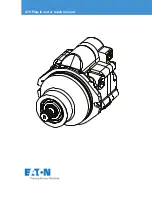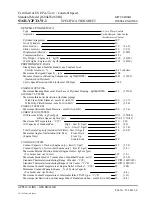
Marine Installation Manual
2021-08
6-13
6 Engine Dynamics
6.4 Torsional vibration
X72DF
Low-energy vibrations
Viscous damper
Where low-energy torsional vibrations have to be reduced, a viscous damper can
be installed (see
). In some cases, the torsional vibration calcu
-
lation shows that an additional oil-spray cooling for the viscous damper is
needed. In such cases the layout must be in accordance with the recommenda
-
tions of the damper manufacturer and WinGD design department. The viscosity
of the silicone oil in the viscous damper must be checked periodically. The in
-
terval is specified by the damper manufacturer. For more information, refer to
the Operation Manual.
High-energy vibrations
For high-energy torsional vibrations that may occur e.g. on 5- and 6-cylinder en
-
gines, a spring type damper with its damping effect may be considered (see
).
Spring damper
The spring damper must be supplied with oil from the engine’s lubricating oil
system. Depending on the torsional vibration energy to be absorbed, the damper
can dissipate up to 180 kW of energy (this will be based on the number of cylin
-
ders).
Depending on the installed spring damper, the initial estimated oil flow to the
spring damper is approximately 35m
3
/h. However, the project-specific oil flow
must be provided by the spring damper designer. This project-specific oil flow
must be based on the final torsional vibration calculation results.
In case of uncertainty with regards to the oil flow, WinGD recommends in
-
stalling the main lubricating oil pumps with a higher flow capacity margin. The
arrangement of the lubricating oil system (see
) enables return
of excessive oil supply to the lubricating oil drain tank. This is achieved through
a pressure retaining valve.
NOTE
For Geislinger spring dampers, the initial estimated oil flow to the spring
damper as well as the project-specific oil flow are provided with a toler
-
ance of ±50%.
NOTE
For spring damper installation, the application of a damper monitoring
system is mandatory.
















































